"They will spread hate. We will spread love,” Gandhi said, referring to Modi’s ruling Bharatiya Janata Party
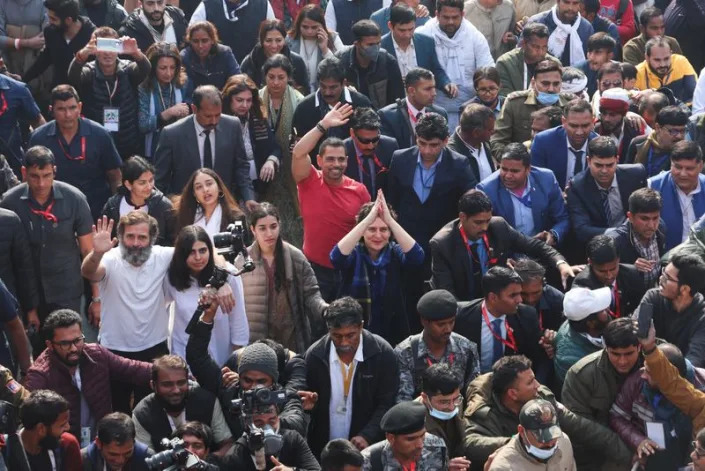
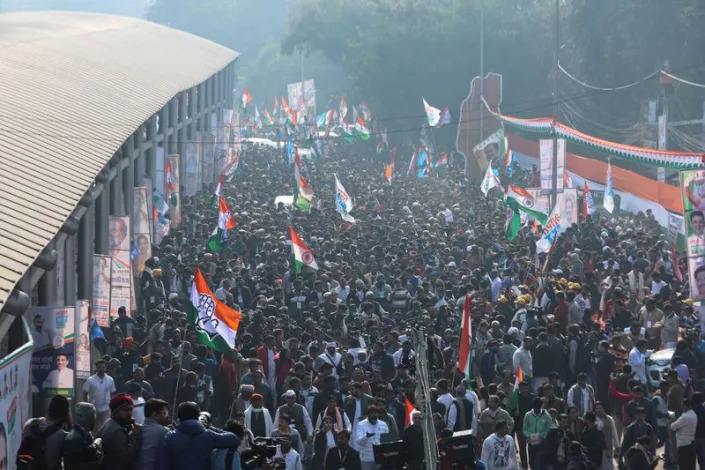
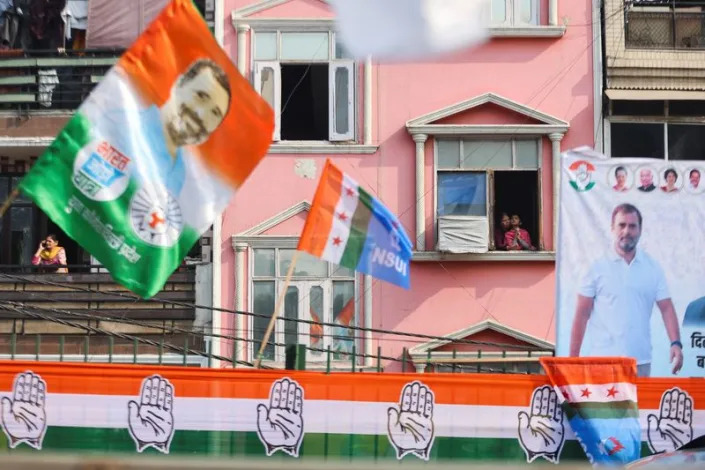
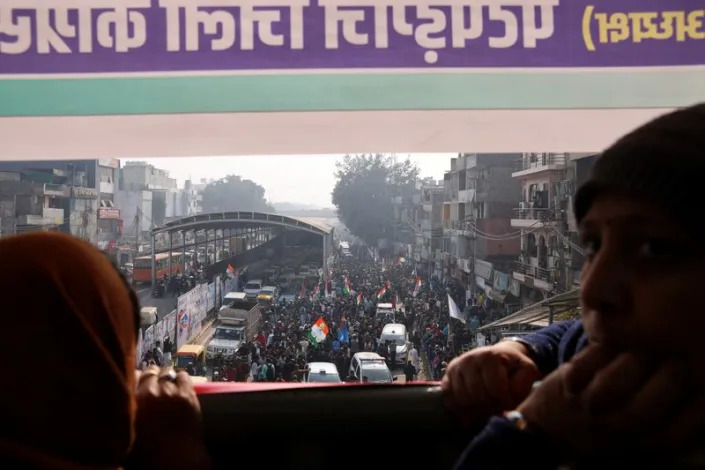
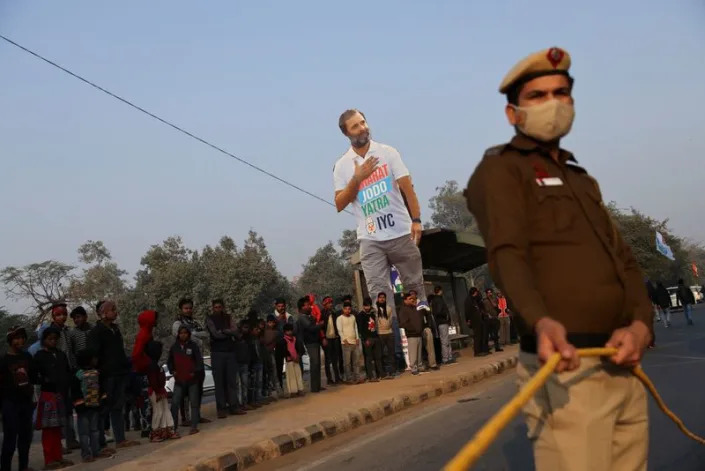
Congress Party leader Rahul Gandhi's cross-India Bharat Jodo Yatra reaches Delhi
Sat, December 24, 2022
NEW DELHI (Reuters) - A cross-country march led by Indian opposition leader Rahul Gandhi reached the capital New Delhi on Saturday, hoping to regain some of the popularity it lost to the ruling Hindu-nationalist party.
More than 1,000 people joined Gandhi's march against "hate and division", which aims to turn the Congress party's fortunes around after its drubbing by the Bharatiya Janata Party (BJP) in a 2019 election.
The parade, which has received a better public response than expected, will take a nine-day break in Delhi before starting its final leg on Jan. 3 towards Srinagar in the northernmost Himalayan region of Kashmir.
Gandhi's mother, former Congress president Sonia Gandhi, party leader Priyanka Gandhi and her husband Robert Vadra joined Saturday's march.
The Nehru-Gandhi dynasty has controlled the Congress party for decades but has also overseen its recent decline. Rahul Gandhi resigned as Congress president after the last election. The next one is due by 2024.
Sharing a picture of himself hugging his mother during the rally, Gandhi tweeted: "The love I have received from her is what I am sharing with the country".
The "Unite India Rally" march began in September in the coastal town of Kanyakumari on the southern tip of India. It plans to cover more than 3,500 km (2,200 miles) to reach Srinagar in about 150 days.
(Reporting by Munsif Vengattil and Anushree Fadnavis in New Delhi; Editing by William Mallard)
India opposition’s ‘unity march’ against hate enters capital
SHEIKH SAALIQ and AIJAZ HUSSAIN
Sat, December 24, 2022
NEW DELHI (AP) — Members of India’s main opposition Congress party and thousands of supporters walked into the capital on Saturday as part of a 5-month-long cross-country “unity march” seeking to challenge what they say is a “hate-filled” version of the country under the Hindu nationalist government.
Joined by thousands of party workers and senior leaders, the march led by Rahul Gandhi, an opposition leader of the Congress party and scion of the influential Gandhi family, entered New Delhi after passing through eight states.
Flanked by his mother, Sonia Gandhi, and sister, Priyanka Gandhi, the 52-year-old leader said that the motive of his long walk across the length of the country is to revive the once-mighty Congress party and showcase the “real India” unlike the “hate-filled version” offered by Prime Minister Narendra Modi.
"They will spread hate. We will spread love,” Gandhi said, referring to Modi’s ruling Bharatiya Janata Party
Gandhi set off for the “Bharat Jodo Yatra,” or “Unite India March,” in Kanyakumari, a coastal town that is the southernmost tip of India, on Sept. 7. The march, which is broadcast live on a website, is expected to traverse 3,570 kilometers (2,218 miles) and cross 12 states before finishing in Indian-controlled Kashmir by February.
Passing through hundreds of villages and towns, the march has attracted farmers worried about rising debt, students complaining about increasing unemployment, civil society members and rights activists who say India's democratic health is in decline. Along the way, Gandhi has also shed his formerly clean-shaven look for a thick beard and slept in shipping container cabins during night halts.
In multiple impassioned speeches during the march, Gandhi has often targeted Modi and his government for doing very little to address the growing economic inequality in India, the rising religious polarization, and the threat posed by China. The armies of India and China are locked in a bitter standoff in the mountainous Ladakh region since 2020. Despite over a dozen rounds of talks at military, political and diplomatic levels, the standoff has protracted.
Modi's party has dismissed Gandhi's march and speeches as a political gimmick to regain his “lost credibility.”
“The character of the Congress has been to break India,” the party said in a tweet Saturday.
Hindu nationalism has surged under Modi and his party, which have been criticized over rising hate speech and violence against Muslims in recent years. Opponents say Modi’s silence emboldens right-wing groups and threatens national unity, but his party has denied this.
Even though the Congress party says Gandhi’s cross-country walk is mainly to reestablish an emotional connection with Indians, the march's electoral ambitions are hard to miss.
With a national election less than 16 months away, it could determine whether India’s beleaguered opposition can put up a fight against the electoral juggernaut of Modi’s party that won the majority in 2014 and 2019.
Rasheed Kidwai, a political analyst, said Gandhi is “employing some politically correct methods during his long walk that has potential to do some image correction for him.” But he cautioned that only electoral victories will in the end define whether Gandhi’s march is successful.
“Modi’s BJP has a success rate of about 90% in over 200 parliamentary seats where it’s in direct contest with the Congress. If this march reduces that rate, that would be quite a success. In a democracy, it is important to be relevant and win elections," Kidwai said.
In 2019, Modi's party won 303 out of 543 parliamentary seats, in part due to its Hindu nationalistic agenda. Congress was a distant second with 52 seats.
Since Modi came to power for the first time in 2014, the Congress party has also suffered crushing defeats in a slew of state polls. It currently rules only three out of 28 states.
Plagued by leadership crisis and electoral routs, the party in October elected its first non-Gandhi president after 24 years in an attempt shed an image of being run by a single dynasty.
The party has been led by non-family members in the past, but Sonia Gandhi and Rahul Gandhi had been at its helm since 1998.
The march has helped Gandhi, ratings show.
In November, polling agency C-Voter said Gandhi’s popularity ratings have seen a slight jump since the march began, from 29% to 31%. The marginal improvement in Gandhi’s popularity, however, remains well below that of Modi’s 66%
Sat, December 24, 2022
NEW DELHI (AP) — Members of India’s main opposition Congress party and thousands of supporters walked into the capital on Saturday as part of a 5-month-long cross-country “unity march” seeking to challenge what they say is a “hate-filled” version of the country under the Hindu nationalist government.
Joined by thousands of party workers and senior leaders, the march led by Rahul Gandhi, an opposition leader of the Congress party and scion of the influential Gandhi family, entered New Delhi after passing through eight states.
Flanked by his mother, Sonia Gandhi, and sister, Priyanka Gandhi, the 52-year-old leader said that the motive of his long walk across the length of the country is to revive the once-mighty Congress party and showcase the “real India” unlike the “hate-filled version” offered by Prime Minister Narendra Modi.
"They will spread hate. We will spread love,” Gandhi said, referring to Modi’s ruling Bharatiya Janata Party
Gandhi set off for the “Bharat Jodo Yatra,” or “Unite India March,” in Kanyakumari, a coastal town that is the southernmost tip of India, on Sept. 7. The march, which is broadcast live on a website, is expected to traverse 3,570 kilometers (2,218 miles) and cross 12 states before finishing in Indian-controlled Kashmir by February.
Passing through hundreds of villages and towns, the march has attracted farmers worried about rising debt, students complaining about increasing unemployment, civil society members and rights activists who say India's democratic health is in decline. Along the way, Gandhi has also shed his formerly clean-shaven look for a thick beard and slept in shipping container cabins during night halts.
In multiple impassioned speeches during the march, Gandhi has often targeted Modi and his government for doing very little to address the growing economic inequality in India, the rising religious polarization, and the threat posed by China. The armies of India and China are locked in a bitter standoff in the mountainous Ladakh region since 2020. Despite over a dozen rounds of talks at military, political and diplomatic levels, the standoff has protracted.
Modi's party has dismissed Gandhi's march and speeches as a political gimmick to regain his “lost credibility.”
“The character of the Congress has been to break India,” the party said in a tweet Saturday.
Hindu nationalism has surged under Modi and his party, which have been criticized over rising hate speech and violence against Muslims in recent years. Opponents say Modi’s silence emboldens right-wing groups and threatens national unity, but his party has denied this.
Even though the Congress party says Gandhi’s cross-country walk is mainly to reestablish an emotional connection with Indians, the march's electoral ambitions are hard to miss.
With a national election less than 16 months away, it could determine whether India’s beleaguered opposition can put up a fight against the electoral juggernaut of Modi’s party that won the majority in 2014 and 2019.
Rasheed Kidwai, a political analyst, said Gandhi is “employing some politically correct methods during his long walk that has potential to do some image correction for him.” But he cautioned that only electoral victories will in the end define whether Gandhi’s march is successful.
“Modi’s BJP has a success rate of about 90% in over 200 parliamentary seats where it’s in direct contest with the Congress. If this march reduces that rate, that would be quite a success. In a democracy, it is important to be relevant and win elections," Kidwai said.
In 2019, Modi's party won 303 out of 543 parliamentary seats, in part due to its Hindu nationalistic agenda. Congress was a distant second with 52 seats.
Since Modi came to power for the first time in 2014, the Congress party has also suffered crushing defeats in a slew of state polls. It currently rules only three out of 28 states.
Plagued by leadership crisis and electoral routs, the party in October elected its first non-Gandhi president after 24 years in an attempt shed an image of being run by a single dynasty.
The party has been led by non-family members in the past, but Sonia Gandhi and Rahul Gandhi had been at its helm since 1998.
The march has helped Gandhi, ratings show.
In November, polling agency C-Voter said Gandhi’s popularity ratings have seen a slight jump since the march began, from 29% to 31%. The marginal improvement in Gandhi’s popularity, however, remains well below that of Modi’s 66%

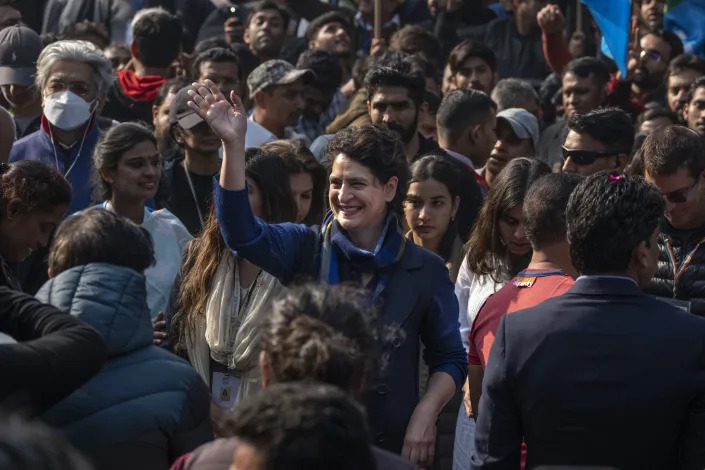
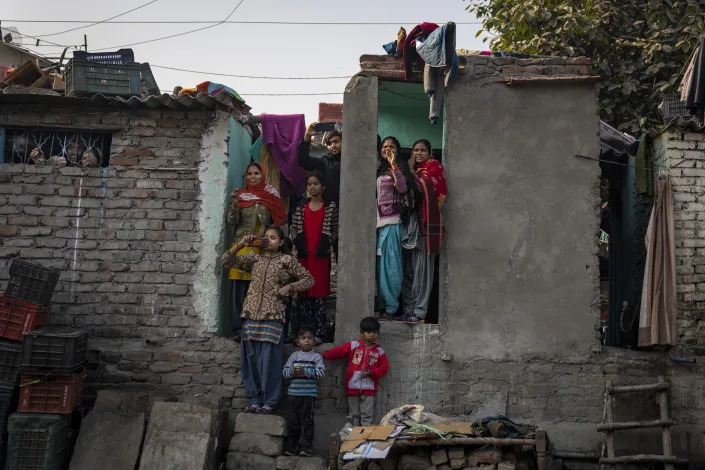

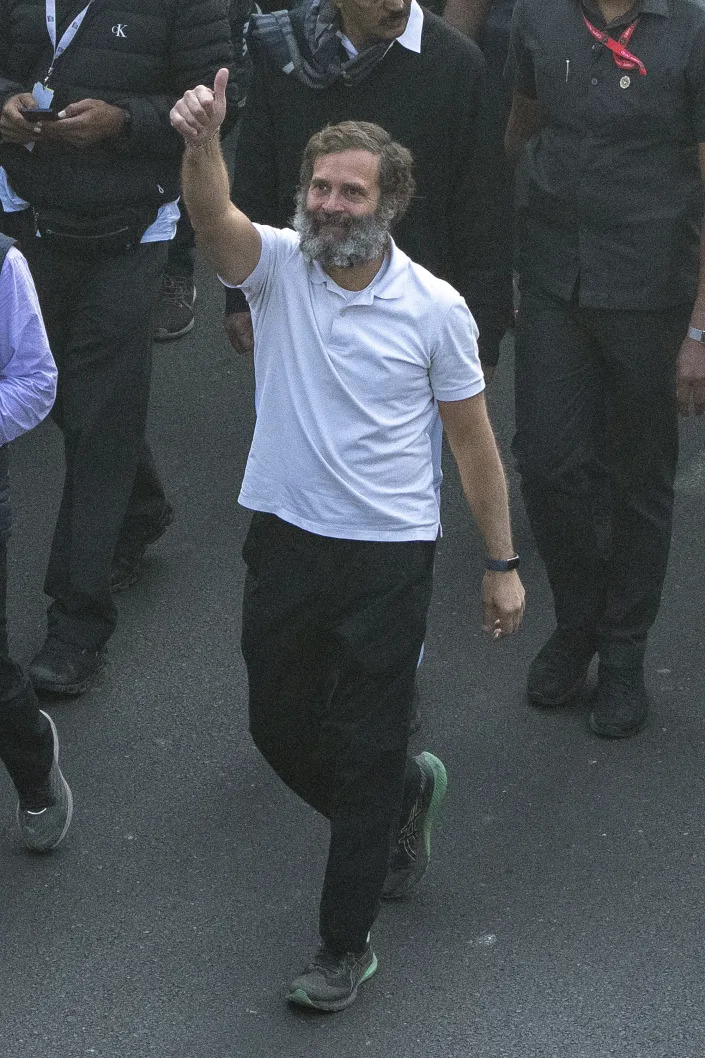
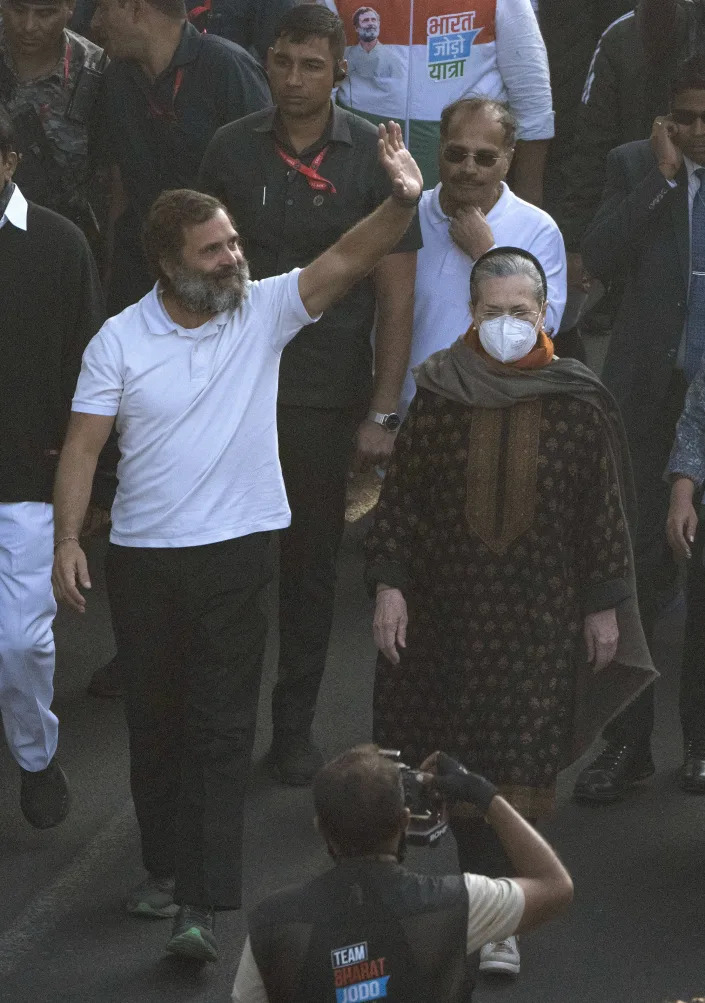
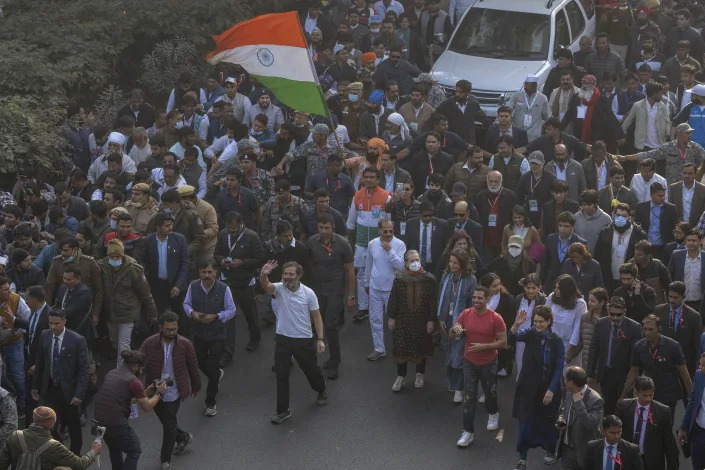
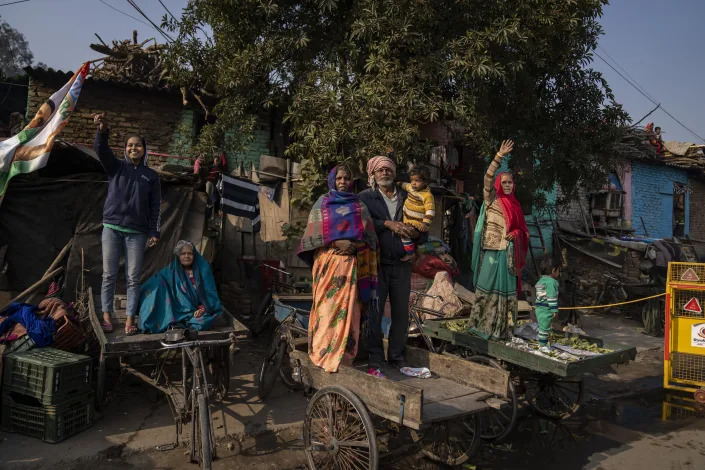
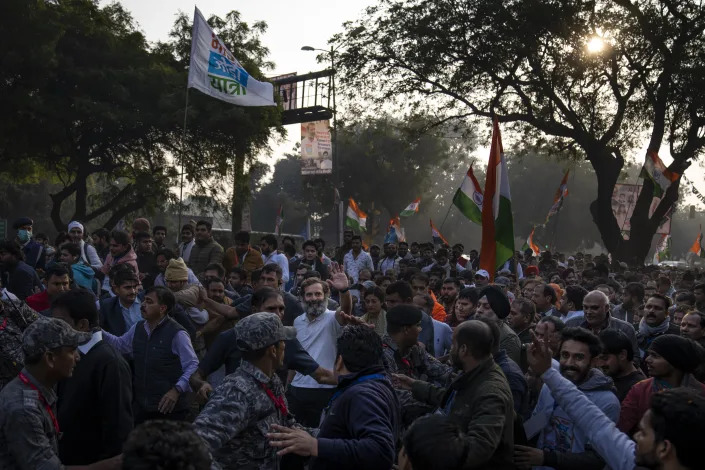
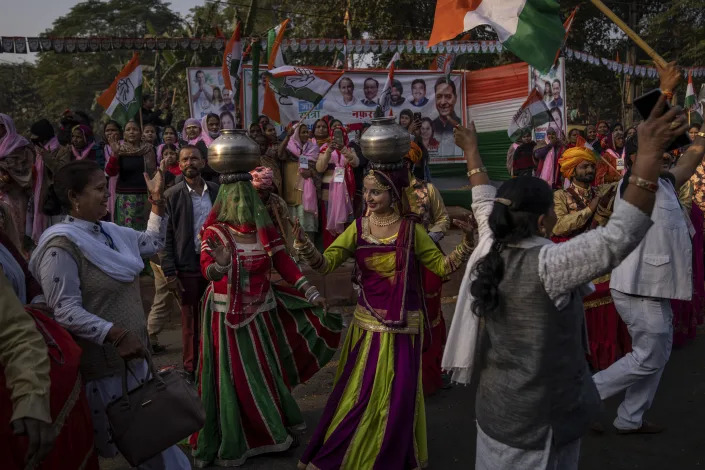
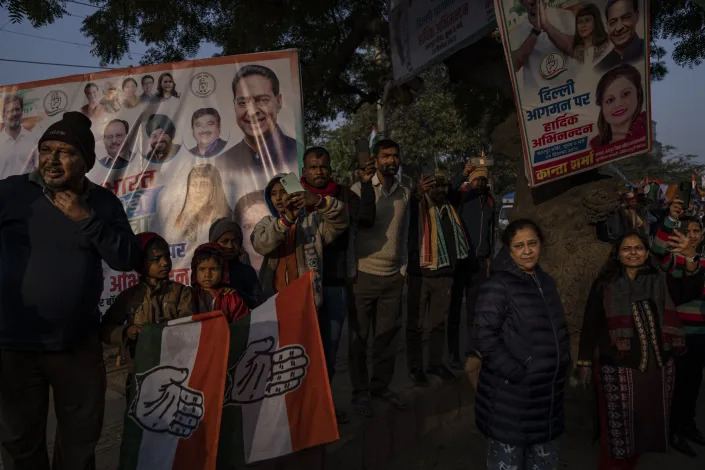

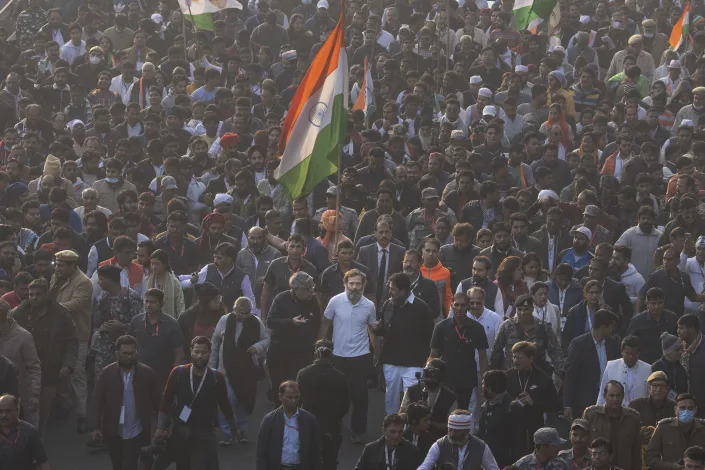
Rahul Gandhi, leader of India's opposition Congress party, centre in white T-shirt, walks with his supporters during a march, in New Delhi, India, Saturday, Dec. 24, 2022. Rahul Gandhi, leader of India's beleaguered opposition Congress party, on Saturday marched in New Delhi along with his supporters, part of his five-month-long 3,570km (2,218-mile) countrywide trek through 12 states that began 105 days ago.
No comments:
Post a Comment